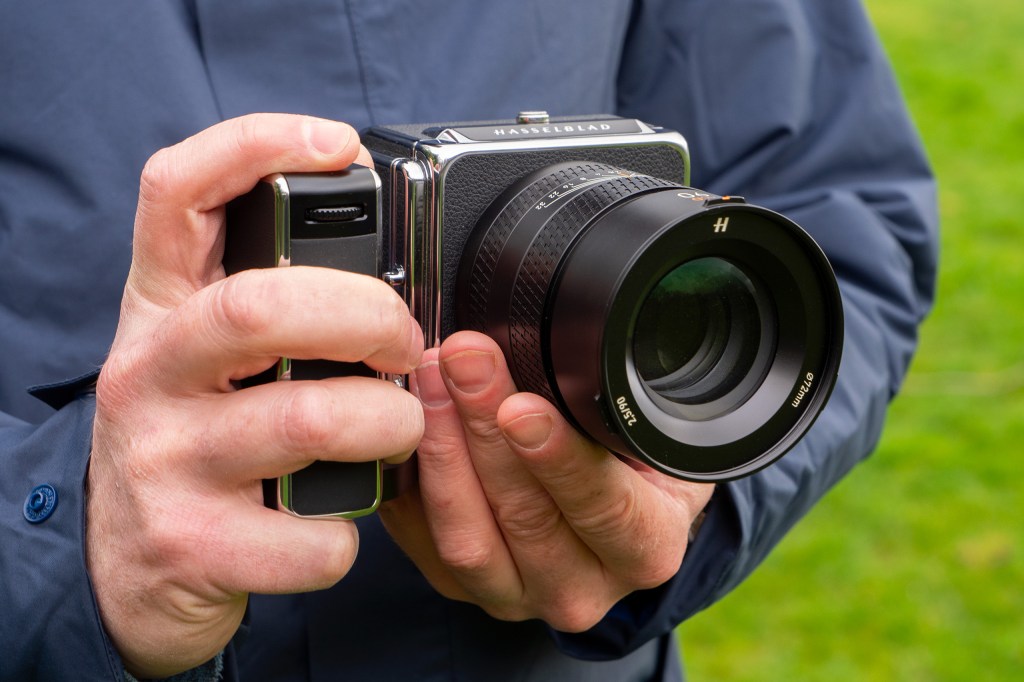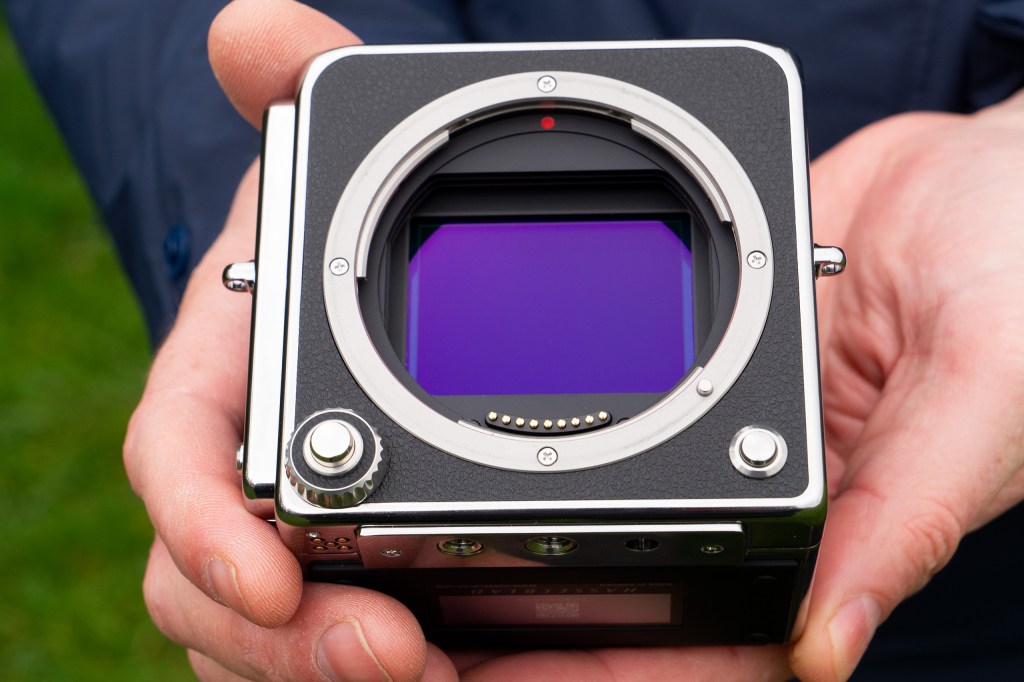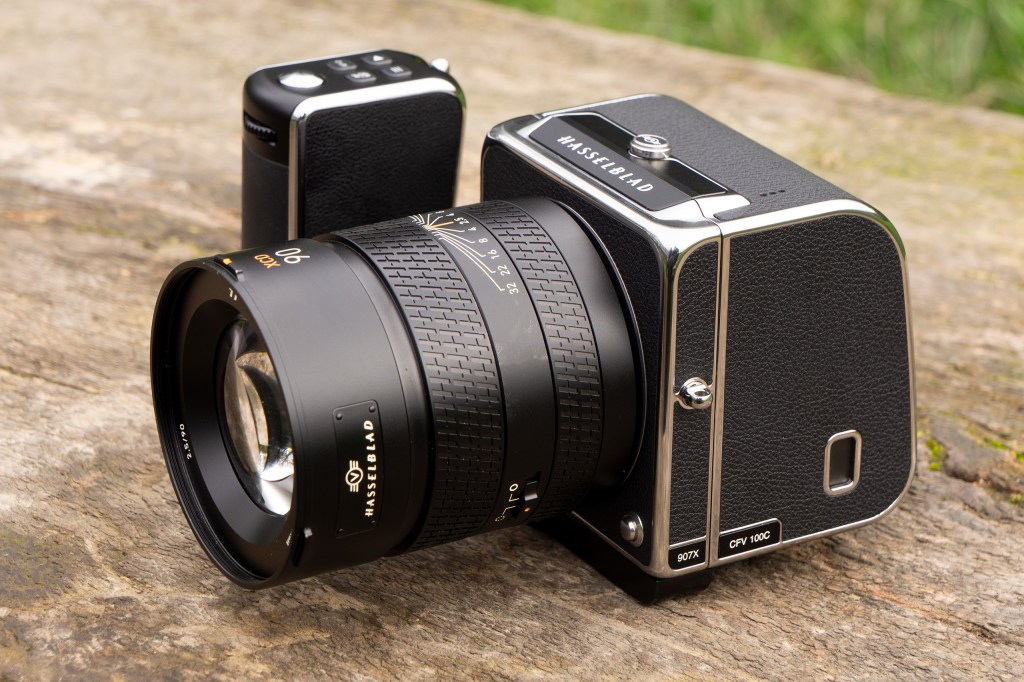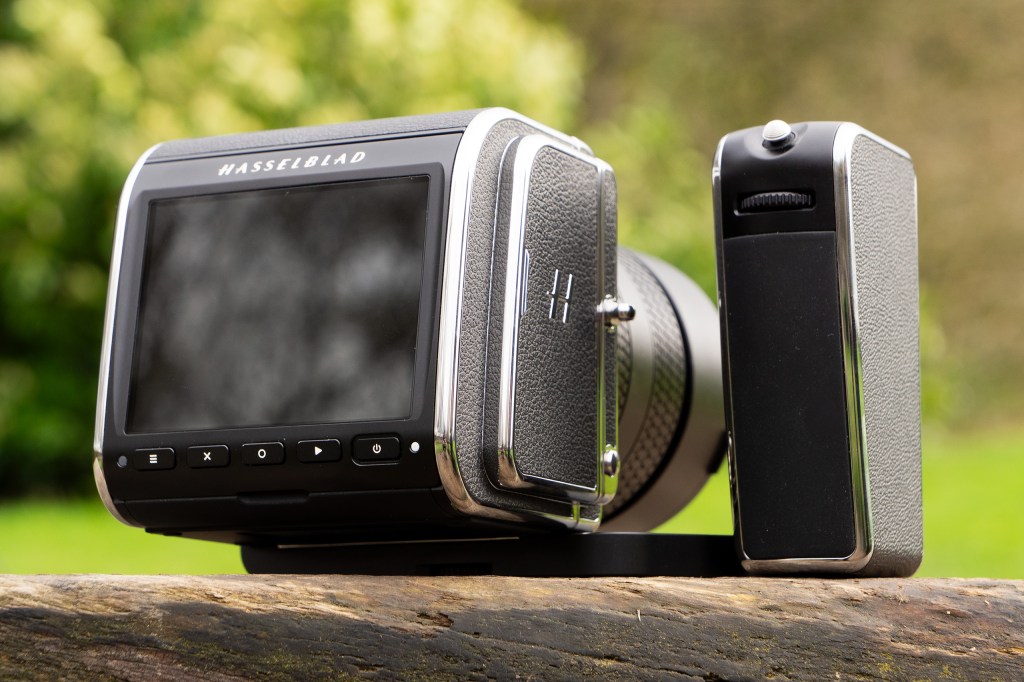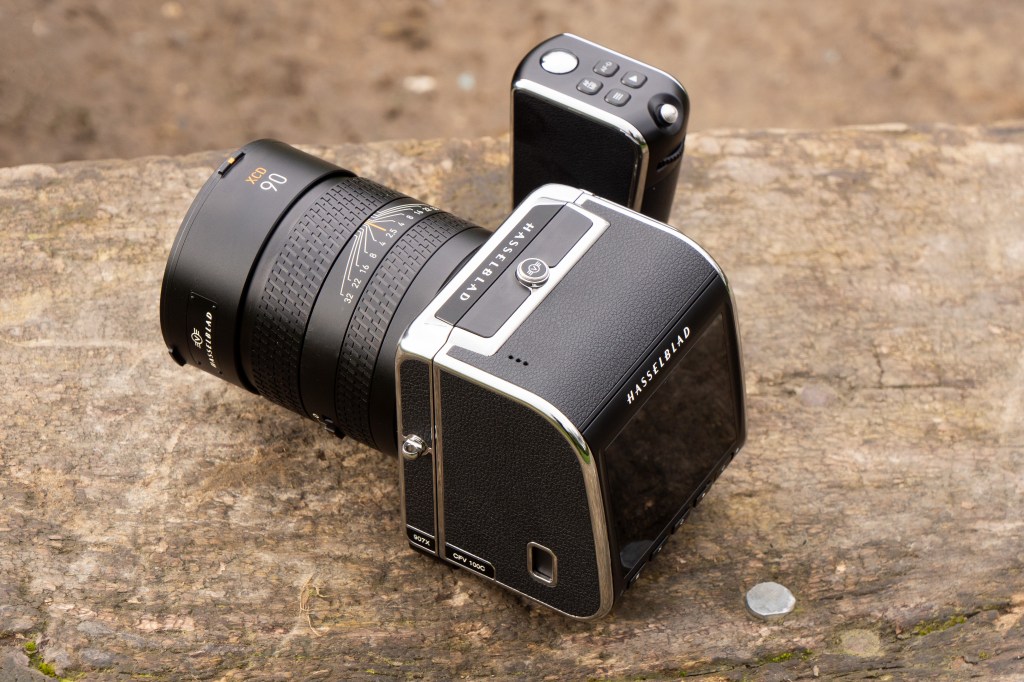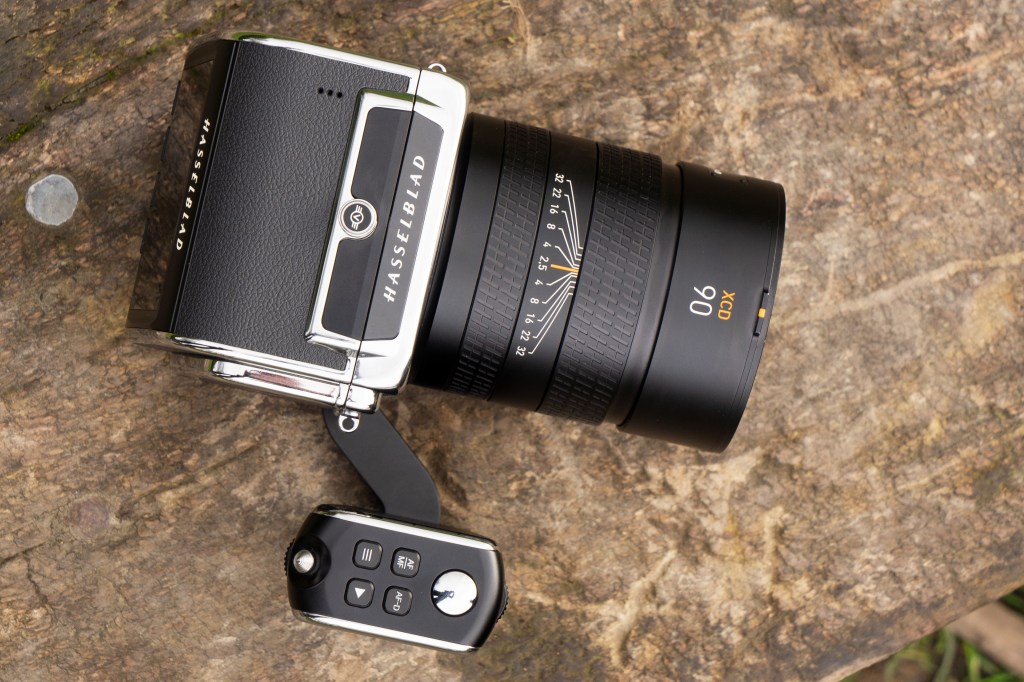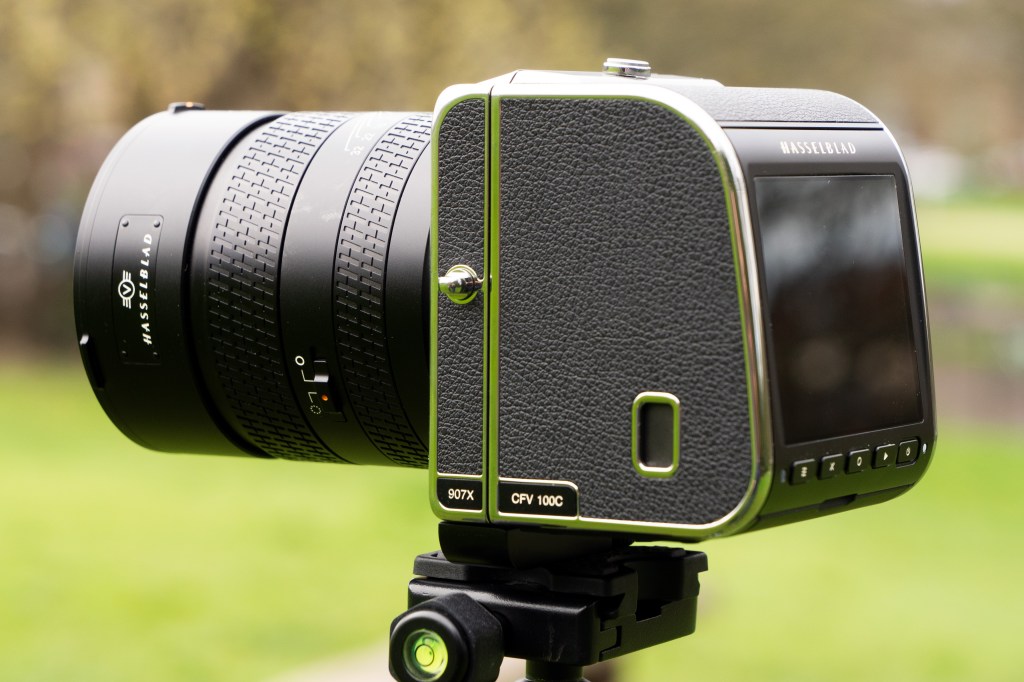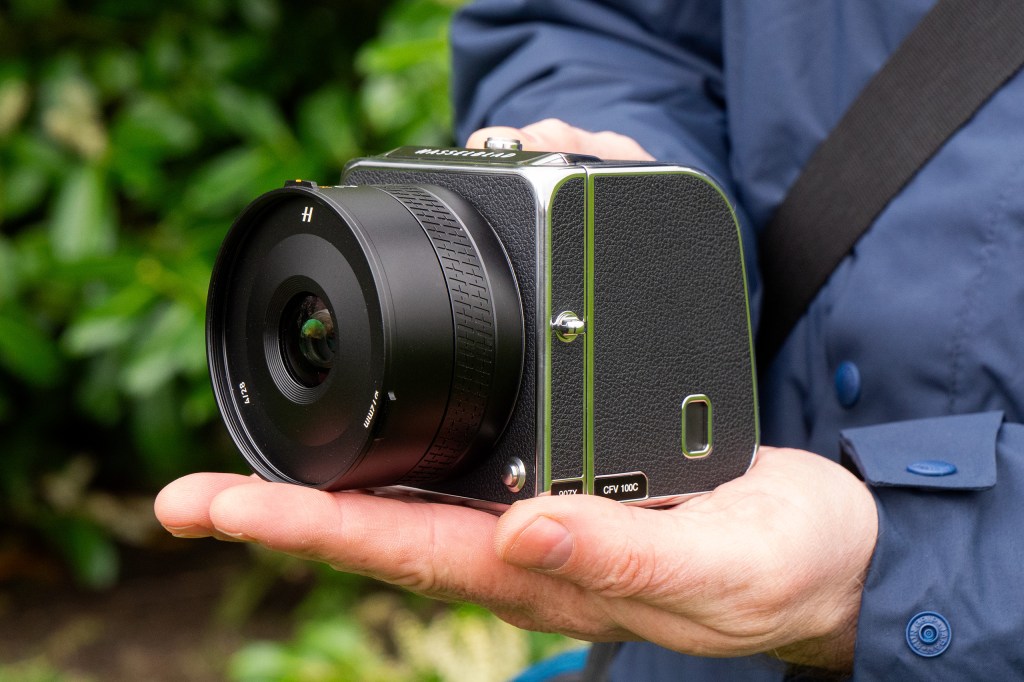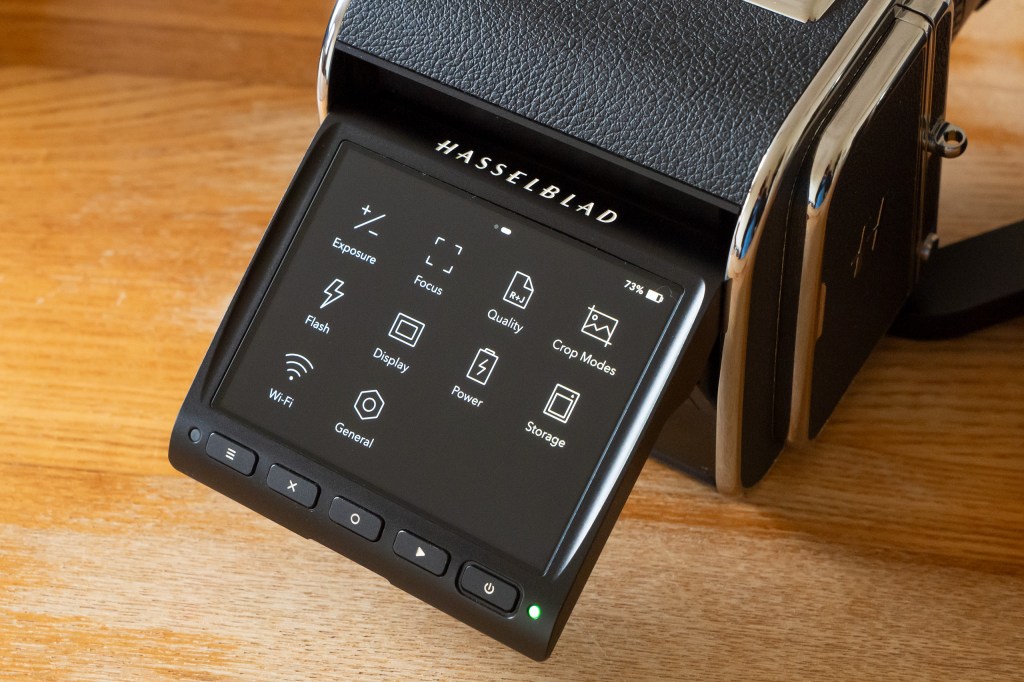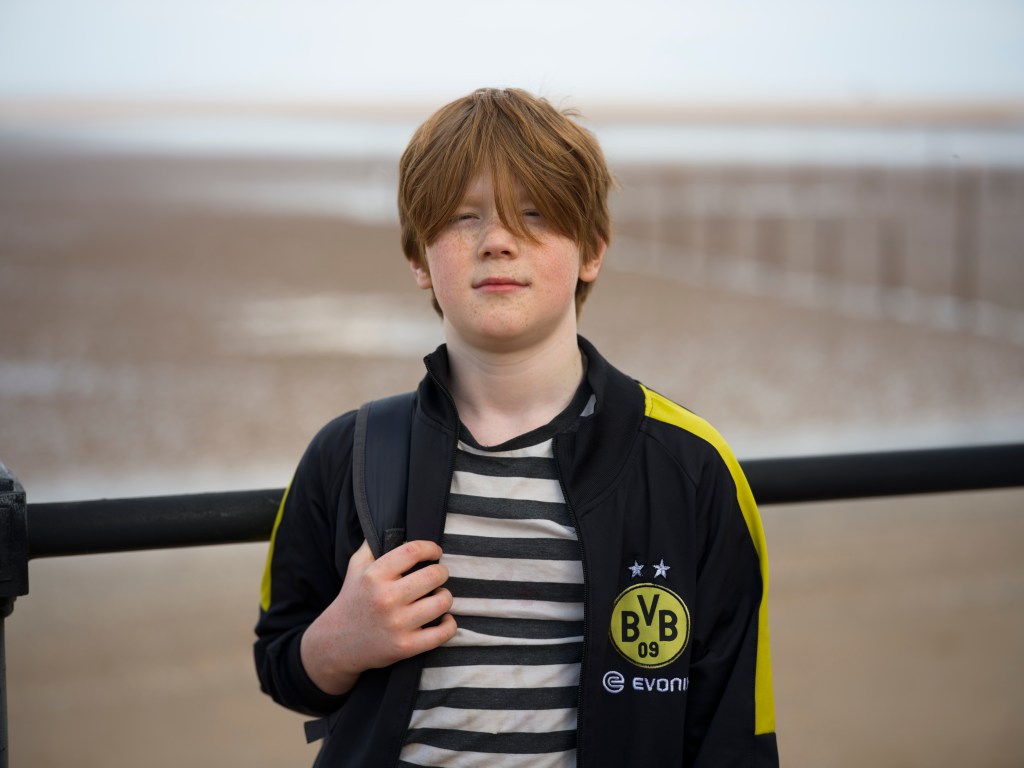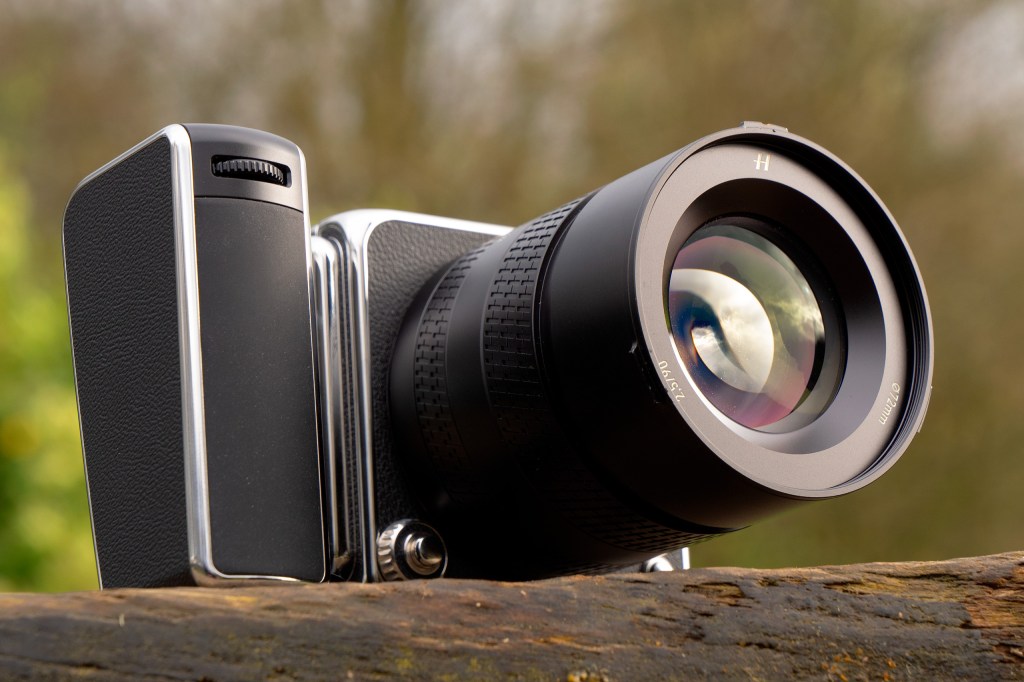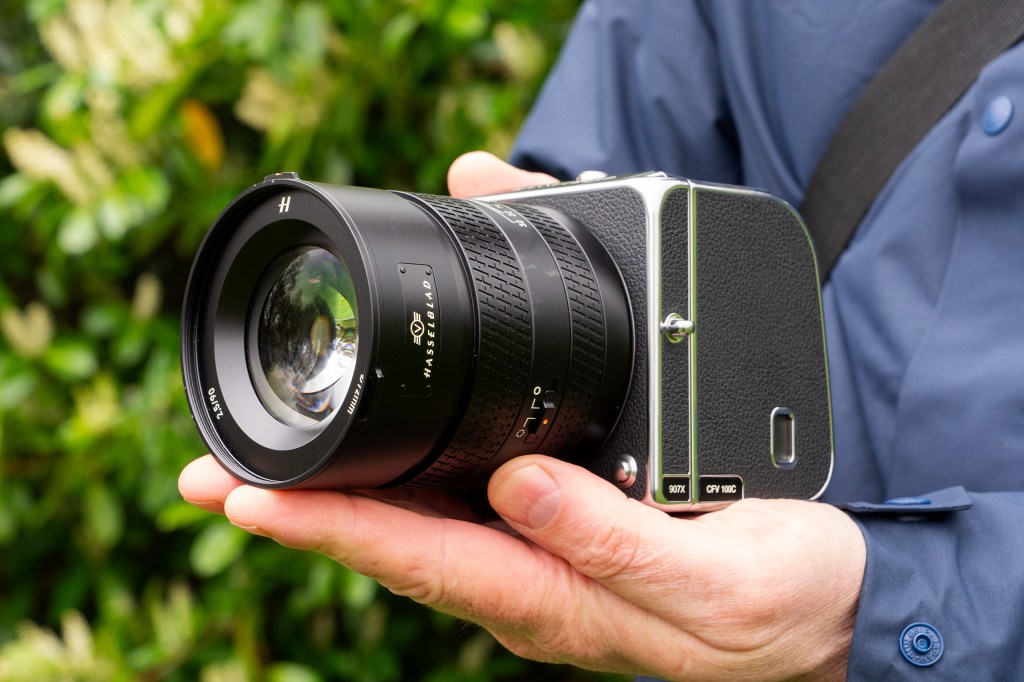Amateur Photographer verdict
The Hasselblac 907X CFV 100C is as unique as it is beautiful, and with stunning image quality thrown in, this is one camera to aspire to.- Can be attached to 500C and others
- Exquisitely designed
- Uniquely small medium format camera
- Extremely detailed images
- Easy to use touch-screen
- Slow focusing, lacks C-AF
- Lack of video, IBIS, eye-detection AF
- Screen only tilts up, not down
The CFV 100C is a new medium format digital back from Hasselblad that is uniquely setup to work with both old Hasselblad cameras, as well as the 907X and the XCD mirrorless lens range. It’s a gorgeously designed camera system, that has the real wow factor, but how does it perform? Joshua Waller finds out…
At a glance:
- £6729 (907X + CFV 100C)
- 100MP medium format BSI CMOS sensor (43.8 × 32.9mm, 0.78x magnification)
- ISO64 – ISO25600
- CFV 100C can be used with 907X, V System (500C etc), Technical cameras
- Built-in 1TB SSD (high-speed), CFexpress Type B slot
- 294 PDAF zones (and CDAF)
- 3.2inch tilting touchscreen, 2.36m dot (1024×768)
- Wi-Fi (2.4GHz/5GHz)
- www.hasselblad.com
Features
The Hasselblad CFV 100C is a unique medium format camera that is as beautiful as it is expensive. It costs nearly £7000, but it’s easy to see why, offering a unique solution that can breathe new life into old medium format cameras, such as the Hasselblad 500 series, and other models with the same compatibility.
The heart of any camera is the image sensor, and in the CFV 100C is a large 100 megapixel (MP) Back-side illuminated (BSI) CMOS sensor measuring 43.8 × 32.9mm, giving a pixel size of 3.76μm (microns). This is noticeably larger than full frame (35x24mm), but also notably smaller than traditional medium format film which tends to start at 60x45mm (with a variety of other sizes available).
The sensor size gives a 0.78x magnification factor so that, for example, a 90mm lens is equivalent to a 70mm lens (effectively).
RAW can be set to 14-bit or 16-bit, and the camera is said to give up to 15 stops of dynamic range. The camera also shoots at speeds up to 3.3fps when set to 14-bit.
Weight
The camera back on its own is impressively small, measuring 91 × 92 × 61mm and this weighs 572g with the battery and 461g without the battery. These are both without the memory card, as there is 1TB of built-in high-speed storage. Add the 907X and the camera remains impressively small and lightweight, ready to be used with XCD lenses, at 732g (without the grip, but including the battery). The CFV 100C, with 907X and grip, weighs 963g, again without the lens.
Compatibility
The CFV 100C (and CFV 50C) are compatible with most of the Hasselblad V System cameras built from 1957 onwards (SWC excluded), meaning you can use it with the 500 series with popular models including the 500C, 500C/M, and so on, up to the 503CW.
HNCS – Hasselblad Natural Colour Solution – This is Hasselblad’s colour management system designed to give true-to-life colours, with “smooth, detailed transitions” as “perceived by the human eye.”
This is designed to work whether you’re shooting JPEG images or shooting raw images, and is designed to give accurate colour. This colour management system was developed when Hasselblad were developing a new medium-format digital camera in 2004, and is also designed, alongside smooth tonal transitions, for “uncompromising skin tone reproduction.”
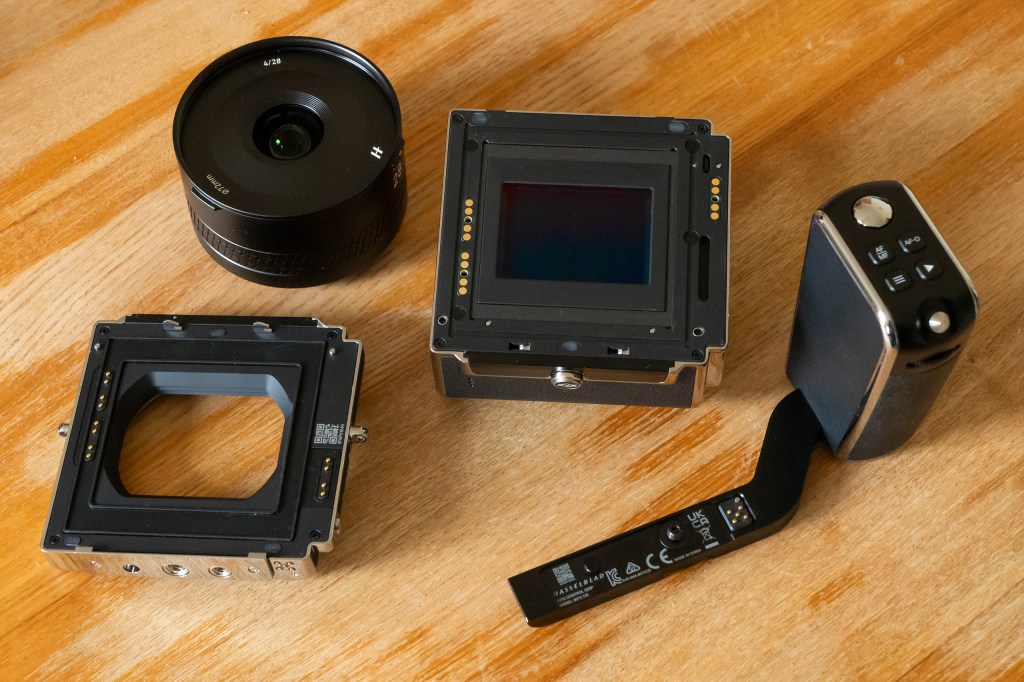
This also means you won’t find different colour profiles or settings to adjust the contrast, saturation, and other settings you find on other cameras. In fact, there are no colour profiles or options on the camera, with the only real way to adjust the colour settings is to adjust the white balance. Hasselblad say this “frees photographers from complicated preset colour profiles” and gives “True-to-life colours by default.”
In use, this does make the camera incredibly easy to use, but at times it can feel a little bit like you’re missing options and settings. For those that are used to shooting raw, then adjusting photo settings later (on a computer) may be preferable anyway, as you’ll always get more control over adjustments in software.
Phase detection autofocus and face detection
The Hasselblad CFV 100C features 294 PDAF (phase detection) auto-focus zones, as well as face detection focus, which is new to Hasselblad cameras. However, if you’re hoping for eye-detection focus, then this is, unfortunately, not available. Nor will you find other advanced subject detection focus.
The tilting touch-screen, has a 2.36million dot resolution, and as well as sitting flush with the camera body can also be tilted up into two positions – at 40 degrees, and at 90 degrees, for waist level shooting. It doesn’t tilt down, but different angles between these are possible.

Remote / Tethered shooting support:
You can use Phocus Mobile 2 which is compatible with iPads and iPhones (Xs or above), with more than 3GB of RAM running on iOS 15.0 or later. Some of the benefits of this include the ability to work remotely or outdoors whilst still having a larger screen to control the camera and review photos. The app can connect over Wi-Fi or USB-C.
In a studio environment, you can shoot tethered using Phocus for Mac/PC which is compatible with computers with 8GB of RAM or more running on macOS 10.15 or later, or Windows 7 64-bit or later.
Build, handling and design
Medium format cameras don’t come cheap, and digital medium format cameras and digital backs from the likes of Hasselblad, Phase One (and Mamiya) would have normally cost upwards of £20K+ before Hasselblad introduced the World’s first medium format mirrorless camera with the 50MP X1D in 2016, with a price of £5990 (exc VAT).
So, with this in mind, the asking price of the CFV 100C is actually quite reasonable at roughly £7K (£6729 inc VAT) for the back and 907X body. The CFV 100C can be used with the 907X body letting you use the XCD series of lenses designed for mirrorless cameras. If you want to add the 907X control grip, this will set you back a further £679.
Other alternatives in the XCD series includes the Hasselblad X2D 100C priced at £7269 body only. In terms of lens prices, the lenses I used in this review include the 90mm F2.5 II XCD lens (at £4059), and the 28mm F4 P XCD lens (at £1689).
Lenses and the shutter
The camera, as with other Hasselblad cameras, uses lenses with a leaf shutter built in to the lens, this means that shutter speeds available will vary depending on what lens you use with the camera, with shutter speeds from 68 min to 1/4000s with XCD Lenses, and up to 1/800s or 1/2000s with HC/HCD Lenses. Using an electronic shutter the range is 68 min to 1/6000s.
There are a range of XCD lenses available designed for Hasselblad’s mirrorless cameras, with 12 currently available, including, at the telephoto end, a 135mm lens, which can also be used with a 1.4x teleconverter for additional reach.
If you use the Hasselblad 500 series, and camera bodies compatible with Hasselblad’s range of ‘C’ / ‘CF’ and V system lenses, then there is a vast array of used lenses to choose from, with the range starting at 24mm going all the way to 500mm and even 1000mm.
Thanks to the mechanical leaf shutter, flash can be used at all shutter speeds, so you don’t need to worry about the flash sync speed as you would with other camera systems (mechanical shutter only). In TTL-mode, the camera is compatible with specific Nikon and Profoto flashes.
Viewfinder – An optional 907X optical viewfinder is available, designed for 28P/35P/55V lenses, priced at £489. I tested the camera without the viewfinder, instead using the screen.
The 907X has two parts, a lens adapter/body letting you use XCD lenses designed for Hasselblad’s mirrorless cameras, and there’s an optional attachable grip which adds additional controls, and screws onto the bottom of the lens adapter.
On the left side is a USB Type-C connection which is a USB 3.1 Gen2 with transfer speeds up to 10Gbit/s. Underneath you’ll find a variety of ports including the shutter control port, flash sync input, flash sync output, and ELX output. On the right-hand side, a sliding cover keep the battery and memory card slot protected. On top is the body release latch, which lets you remove the camera back, as well as removable blanking plates where you can attach additional accessories such as the flash hot-shoe.
Handling and operation
With the optional grip attached to the camera, you can easily use the camera in portrait mode, with the grip at the top, and the camera body at the bottom. However, unlike other cameras, you can’t hold it the other way round with the grip at the bottom, and the camera body at the top, as it becomes unwieldy to hold. Without the grip attached it’s easy to use the camera in any orientation.
The grip screws into the bottom of the 907X body, which makes the camera back compatible with XCD lenses, and also has another peg to keep the grip in line with the body. There are electrical contacts that allow control of the camera, and the grip adds a front and rear control wheel, a top shutter release button, 4 buttons: AF/MF, AF-D, MENU, and Playback, and a joystick which you can press in.
These buttons, along with the lens control ring can be customised. The lens control ring is used to adjust the aperture, on default settings, but can also be used to adjust ISO, Tv, EV, and switch faces (detected), or switched off altogether.
Without the grip attached, if you’re using the camera back (CFV 100C) and the 907X, then you’ll either love the compact size, or you’re find the ergonomics particularly awkward.
I found I rarely used the camera without the grip, and when I did, I ended up with an uncomfortable claw-like grip, and a fear of dropping the camera. This made for a relatively stressful experience, and one I resolved by putting the grip back on.
This was more problematic with larger lenses, like the 90mm f/2.5, but less of an issue with smaller lenses like the 28mm f/4. Of course, if you’re using the camera back with a different body then your experience will be different.
Menus
The menus are relatively straightforward, in fact, they’re really easy to use, and with the screen being a touchscreen, you can simply press and select the options you want. It’s not as fast as the latest smartphones, for example, but it’s easily fast enough to feel responsive in use.
It can, at times, feel like there are a limited number of options, especially when compared to other camera systems which have pages and pages of options, but this can also make the camera easier to use, and help you focus on taking photos rather than adjusting settings.
Auto-focus
The are 294 focus zones and the camera uses phase-detection (PDAF) and contrast detection auto focus (CDAF). The focus system is AF-S (single), and there is no continuous AF (C-AF) option available. There is however Touch AF, and the camera has face detection focus, but no eye-detection.
You can easily change the focus point, either with the touchscreen or using the joystick on the grip. There’s also the ability to zoom in when needed, or use Focus Peaking when using manual focus.
Focus speed is a little bit slow, at times, and noticeably slower than other camera brands, particularly in the mirrorless market. This isn’t too much of an issue, but will of course depend on the types of subject and scenes you’re shooting. If you’re taking portraits, the speed is perfectly adequate with a mostly still model. Landscapes are another area where ultra-fast focus isn’t essential, however if you were looking to shoot sports or high-speed action then the focus speed could be an issue.
Whilst focus speeds were a little slow, the general accuracy of focus was very good, except in low-light conditions where the camera struggled.
Performance
The camera can be considered quite sluggish when compared to other camera brands, with roughly a 3+ second delay after pressing the on/off button, before the rear screen shows anything.
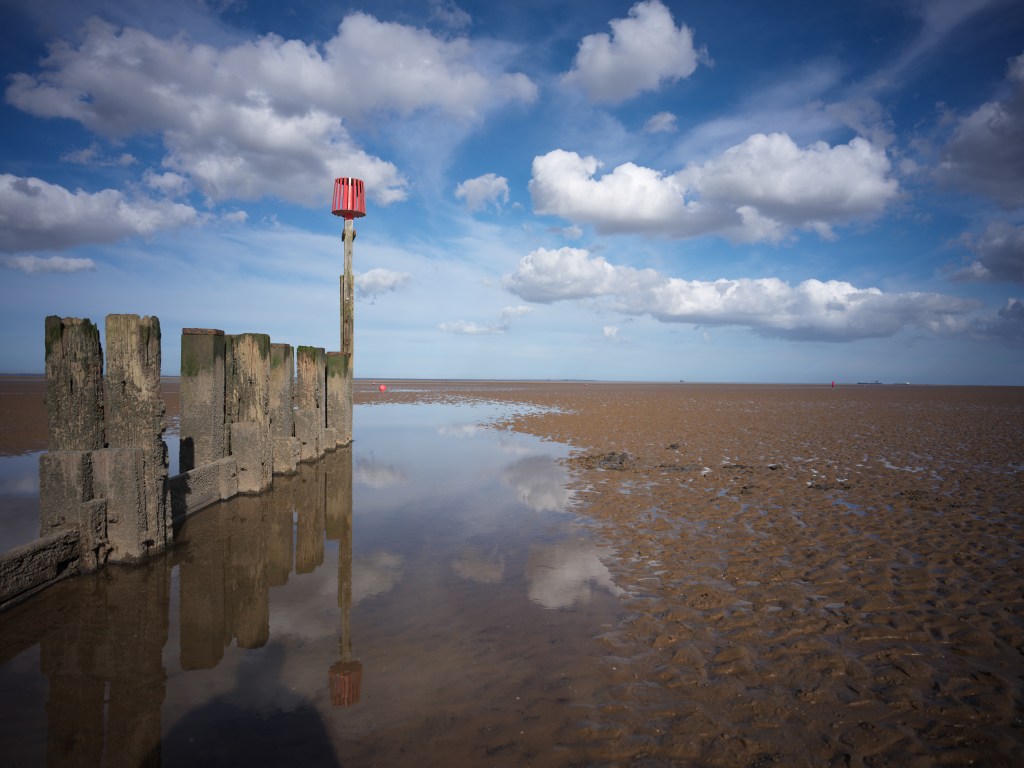
There’s a nice shutter sound when shooting, which is unique the leaf shutters found in the lenses this camera uses (and other cameras with leaf shutters). It’s not as quiet as the one found in the Fujifilm X100VI, but the benefit here is that when shooting portraits, the model can hear the shutter sound, and will know when you’ve taken the shot.

Battery life is respectable at 420 shots (according to CIPA standards), and with USB Type-C you can power the camera (and use the camera at the same time) or charge the battery in the camera, making it easy to charge when needed. There’s a 30W power adapter included in the box, and this will charge the battery fully in 2 hours.

Exposure and metering is reliable with little adjustment needed, with the only changes needed being due to personal preferences. There were times when images were darker than I would have liked to see, with the camera preserving highlight detail when bright whites were in the scene, and I used exposure compensation to adjust for this.
Raw image quality… (JPEG vs RAW)
Do you need to shoot raw to get the best results? In a nutshell, no. But, depending on the look you’re going for, and how good you are at editing raw files, you may want to adjust raw files to achieve your own look. The raw files are extremely malleable, under-exposed your shot by 5 stops, don’t worry about it, you can recover them later!
The levels of detail, general colour reproduction, and dynamic range captured in JPEG images is impressive, and very good, generally. There are quite high levels of contrast, so potentially you may want to reduce this slightly when editing raw images, but if you don’t want to, you should be satisfied with the results.
White balance, on auto settings, tends to be much cooler than other cameras images, so this is one reason why you may want to adjust the white balance or edit raw files.
However, saying this, the JPEG images do give some lovely looking blue skies, so this again, is likely going to be down to personal preferences and the shooting subject and scenario.
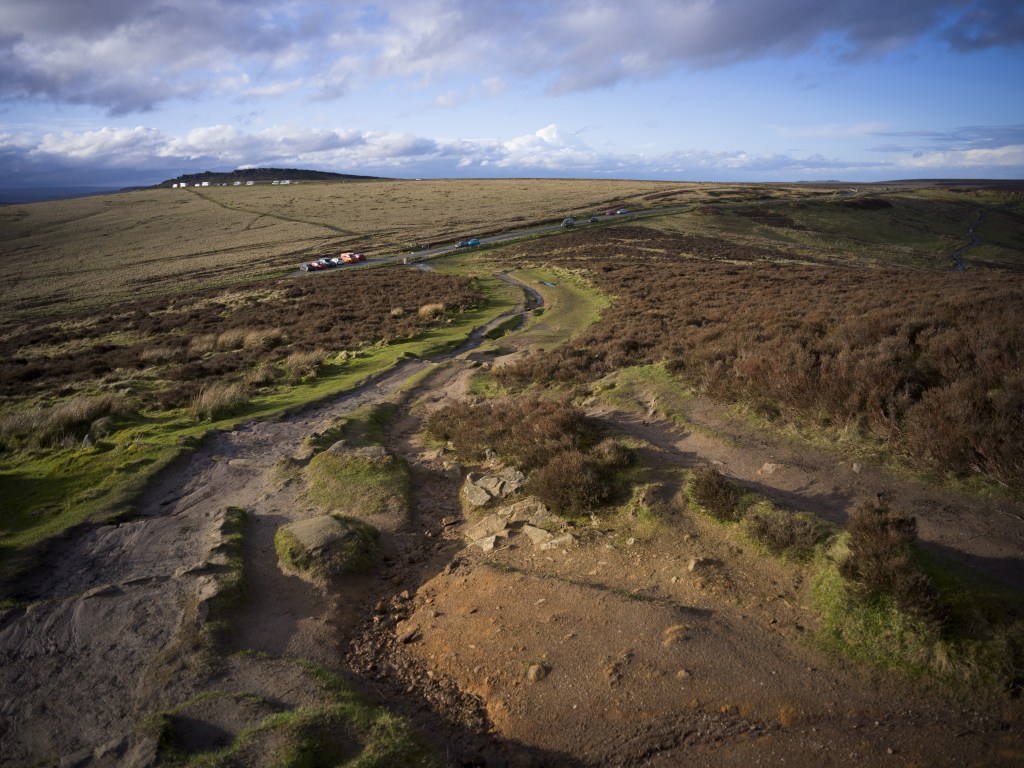
Vignetting can be noticeable with some lenses, particularly the 28mm F4 lens, however, this can easily be fixed later in image editing software.
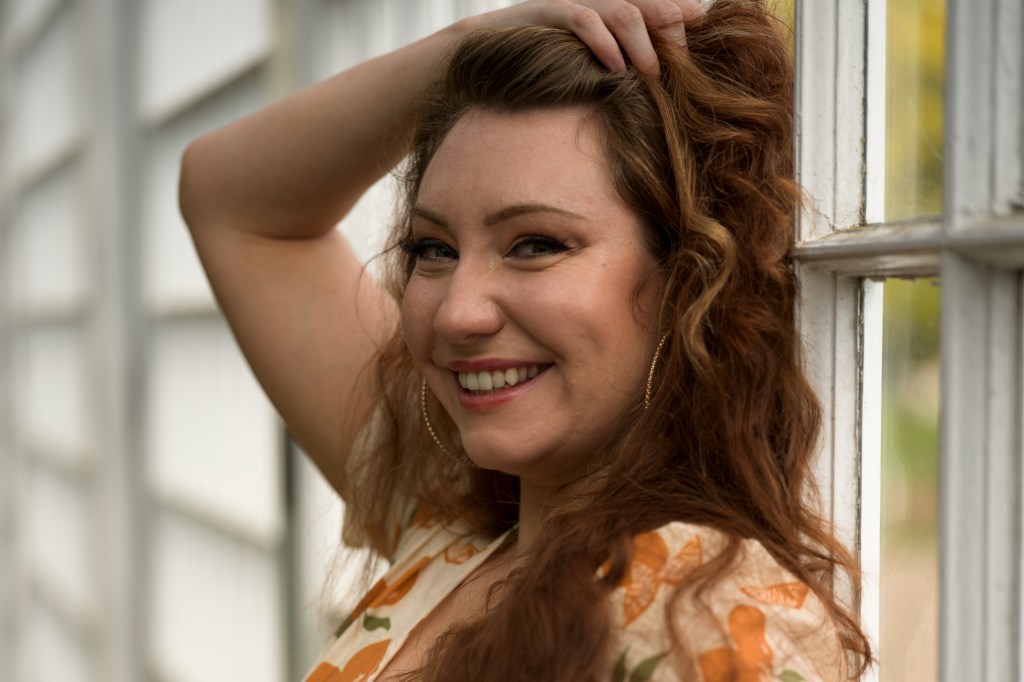
Images are large, with the raw files being around 206MB in size, and JPEG images being between 24MB and 50MB. The 100MP image resolution gives you a lot to play with, for example, you can crop a 100MP image from vertical to portrait, as a 3:2 aspect ratio crop, and you still have a 50MP image to use.
The level of detail is impressive, and you can zoom in, and crop, to see all the fine detail to your hearts content.

At the lowest ISO settings, of ISO64 and ISO100, there is scarcity of noise, and it’s difficult to find any visible grain or noise even in darker areas of the image.
As you increase the ISO speed up to ISO12800 noise is well controlled with a fine grain, that does not look too unpleasing on the image. It’s not until you get to the highest ISO speed of ISO25600 that noise looks unpleasant with random red and green dots.
Does the CFV 100C record video? No.
Value for money
The 907X / CFV 100C is up against some stiff competition in the medium format market, however, if you’re looking for a camera to use with a Hasselblad 500 series (or compatible) camera, then there is no other choice, with this camera filling a unique gap in the market, that is only filled by this camera and the 50MP CFV II 50C. This makes the £6729 price point seem very reasonable indeed.
If you’re looking for alternative medium format cameras, then the Hasselblad X2D 100C can be found for £7269 and benefits from IBIS, and the Fujifilm GFX100 II can be found for £6999 body only.
Verdict
The Hasselblad 907X / CFV 100C is, without shadow of a doubt, an incredibly unique and beautifully designed camera. In fact, it could be described as the best-looking digital camera ever made.
It delivers extremely detailed 100MP images that are just full of crisp detail, making it a real joy to look through your photos at all the different things going on in the scene. If you love looking at your images at 100% and spotting things you never noticed at the time of taking the photo, then you will love this camera.
If you’ve been using other modern cameras and are used to a certain level of speed and features (such as continuous AF, eye-detection auto-focus, and video to name just a few), then you may find that you’re going to have to change how you use a camera, as well as your expectations. This is certainly not a camera for high-speed action, and the focus can feel slow at times, even with relatively slow-moving subjects.
However, there’s something refreshing about the simplicity of the camera, and instead of spending hours going through menus and tweaking every-last setting, this camera keeps it simple so that you can concentrate on enjoying the process of taking photos. You can shoot in 14-bit and 16-bit raw and edit the photos later, as the raw files can be adjusted to the nth degree and are extremely forgiving.
This camera is for taking photos with the camera, not for editing photos, with no in-camera raw editing features, meaning you can leave that for later.
If you’ve got a compatible Hasselblad 500/200 series camera and lenses, then this camera could be just what you’re looking for, and if you want to use Hasselblad’s XCD lenses, they have a range of incredible lenses that deliver beautiful images.

Specifications
| Sensor | 100MP BSI CMOS, 43.8 × 32.9mm |
| Output size | 11656 x 8742 |
| Focal length mag. | 0.78x |
| Lens mount | XCD with 907X body (all HC/HCD, XPan, and V System Lenses using the correct lens adaptor) |
| Shutter speeds | 68min to 1/4000s with XCD Lenses (mechanical) 68min to 1/800s or 1/2000s with HC/HCD Lenses (mechanical) 68min to 1/6000s (electronic) |
| Sensitivity | ISO64 – ISO25600 |
| Exposure modes | P/A/S/M/AUTO |
| Metering | Spot, centre weighted, and centre spot |
| Exposure compensation | +/- 5EV |
| Continuous shooting | 3.3fps with 14-bit colour depth |
| Screen | 3.2inch tilting touchscreen, 2.36m dot (1024×768) |
| AF points | 294 (PDAF/CDAF), AF-S (single), Touch AF, face detection supported |
| Video | None |
| Connections | Shutter control port, flash sync input, flash sync output, ELX output, USB Type-C |
| Memory card | 1TB SSD internal, CFexpress Type B |
| Power | Rechargeable Li-ion battery (VHB1, 7.27V DC/3400mAh) |
| Battery life | 420 shots (CIPA) |
| Dimensions | 102 × 92 × 84mm (907X and CFV 100C) |
| Weight | 620g (907X and CFV 100C, without battery) |
Follow AP on Facebook, Twitter, Instagram, YouTube and TikTok.


